On the Southeast Side, a long abandoned grade level railroad line lives on in the gentle rise of the streets it once crossed.Along the former route, there are several right-of-way remnants and examples of infill housing. Called the Brookdale Spur, it was built by the Baltimore and Ohio railroad (B&O). Though the B&O is one of the nation’s oldest railroads, it was extended west to Chicago much later than most others, in 1874. This abandoned line forms part of the B&O’s first route into the city. The line originally connected to the Illinois Central (IC) tracks near 71st Street for the trip downtown. Once the IC tracks were elevated in the area around the turn of the 19th Century, a connecting ramp was not built for the B&O line, which was then relegated to industrial branch line status until its closure in the 1970s.

MSN Live Maps
The B&O’s main route into the city from the southeast became much more confusing and convoluted once its connection to the IC was severed. It involved using the Rock Island and Chicago & Northern Pacific (later to become the B&O Chicago Terminal Railroad) to access Grand Central Station from the west.
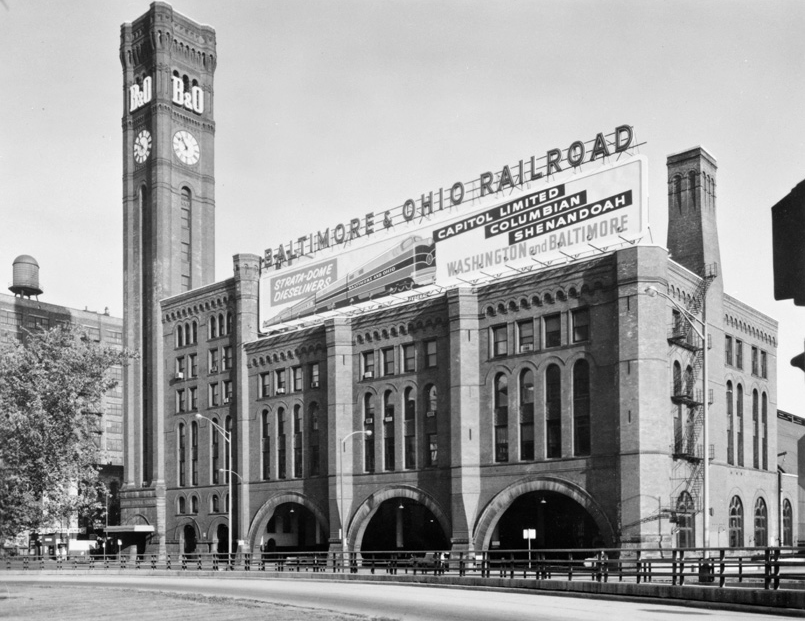 Cervin Robinson, Historic American Buildings Survey, HABS ILL,16-CHIG,18-1, 1963.
Cervin Robinson, Historic American Buildings Survey, HABS ILL,16-CHIG,18-1, 1963.
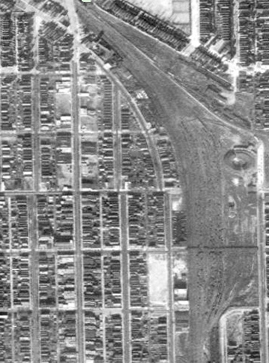
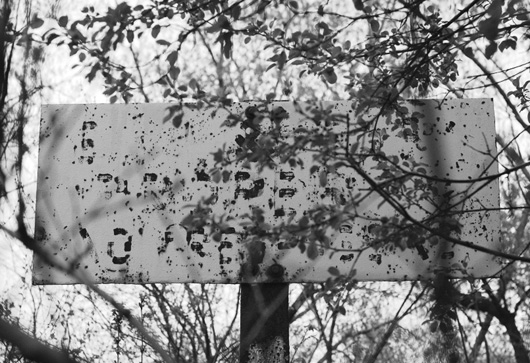 Left: USGS aerial survey, 1937.
Left: USGS aerial survey, 1937.
Left: The B&O yard and neighboring IC South Chicago Branch coach yard near 86th and Burley in 1937. The B&O yard was scaled down in size when 87th Street was extended across it sometime in the 1950s. To date, much of this land has not been built over after having been abandoned for nearly half a century. Nature has taken its course and most of this swath is now covered with trees and brush. The roundhouse visible at the right of the image was removed in the 1940s.
Right: A well-rusted, nearly illegible ‘No Trespassing’ sign located at the edge of the yard.
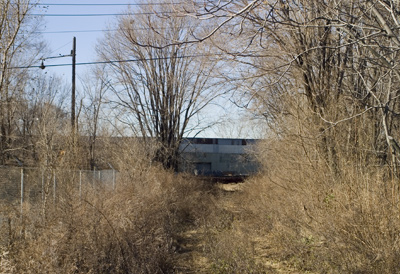

Left: A view of the remains of the B&O freight yard, facing west from Burley Avenue near 86th Street. Note the old streetlight in a neighboring parking lot, also abandoned. It served the huge neighboring U.S. Steel South Works mill, which the railroad also serviced.
Right: A view of the adjoining electrified IC South Chicago Branch coach yard, which remained in service until the 1970s. The two railroads and yards paralleled each other in the area, though there was no connection between them.
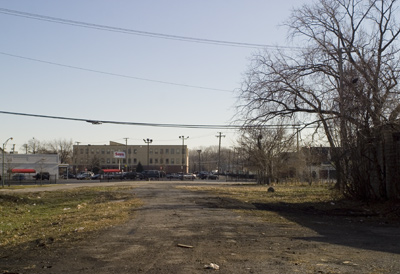
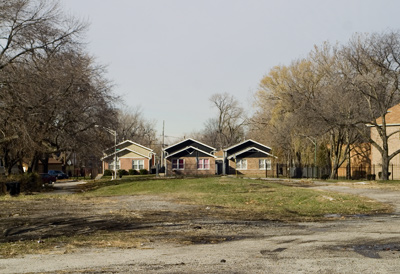
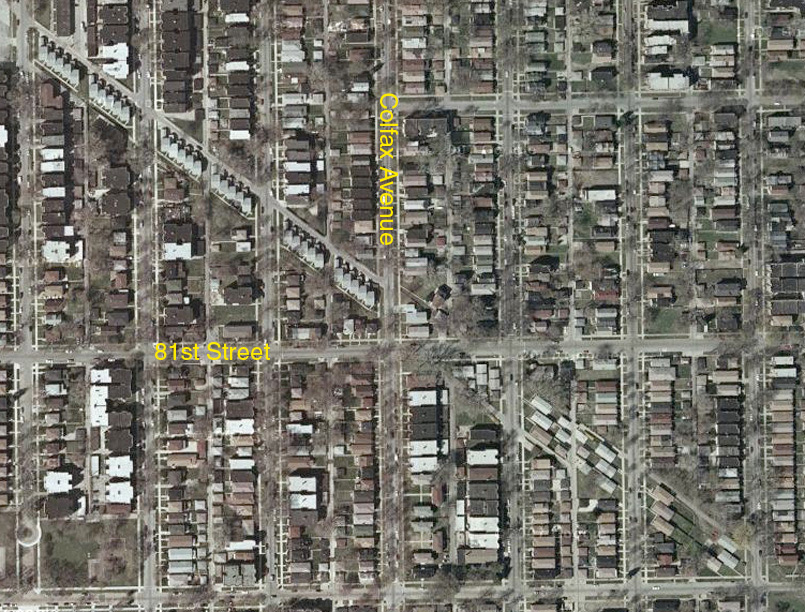 Google Maps
Google Maps
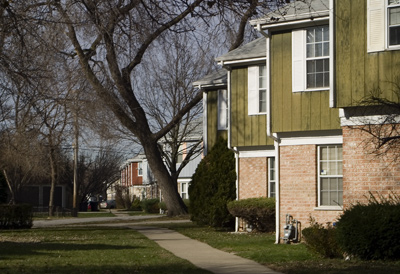
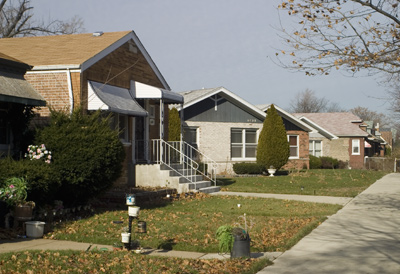
The positioning of these images corresponds to the alignment of the aerial view. The houses in the left image, located to the west of Colfax, orient north-south along a diagonal alley. The houses in the background of the right image are located east of Colfax, and run directly parallel with the former rail line. Also, the two-story houses at left are newer than their more diminutive counterparts at right, having been built in the 1990s.
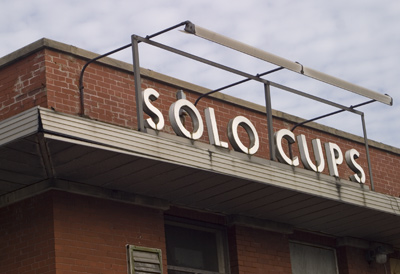
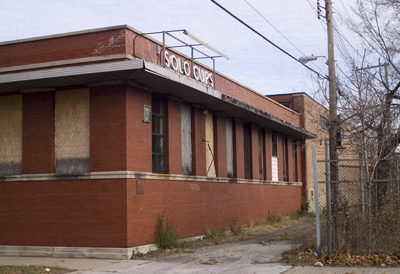
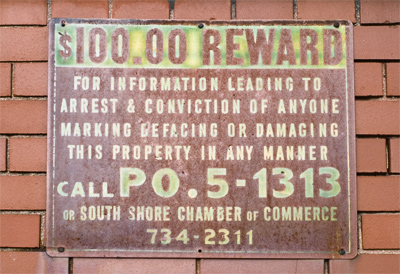
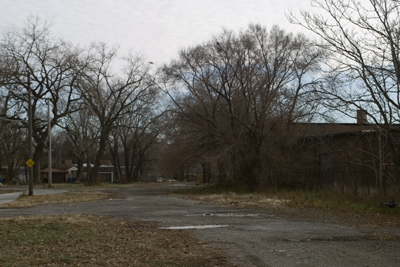
Right: A view of the former (now paved over) right-of-way behind the Solo Cup plant.
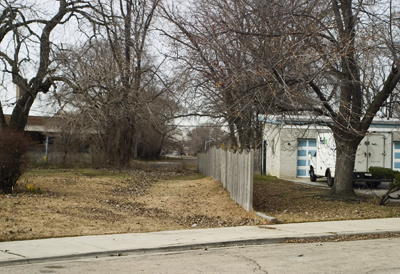
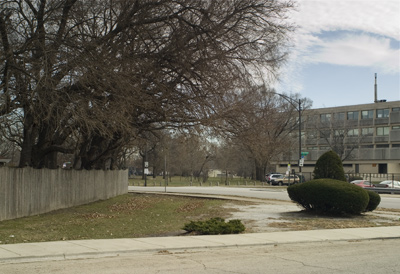
The right-of-way is still visible and undisturbed at 75th and Constance. These are views northwest (left) and southeast (right). Rosenblum Park, formerly bisected by the line, is visible in the image at right.
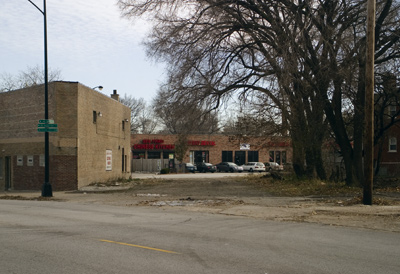

Right: The B&O route facing northwest to Stony Island from 74th and East End. A sewage pumping station was formerly located on some of this land.
Another building materials yard on Jeffery near 75th was also served by the line. This yard was owned by the Chicago Fire Brick Company, which also operated an architecturally notable factory on Elston Avenue that still stands today. The proliferation of building material yards along the line was a likely result of the rapid development of the South Shore area in the 1920s, a time when many bungalows and apartment buildings were being built. This particular building materials yard was later built over with a post-World War II housing development. Several other coal yards, building materials yards, and small factories were served along the route.

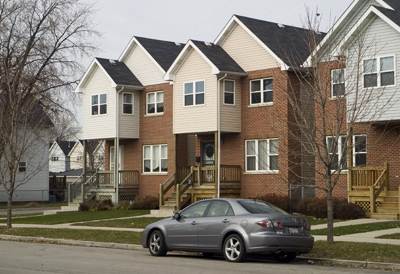
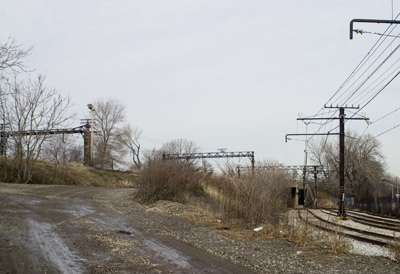
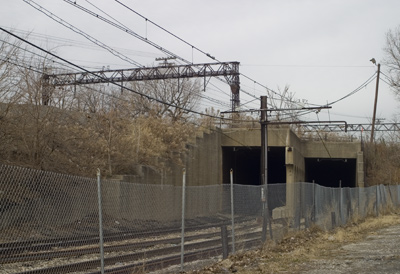
There are several reasons for the abandonment of the Brookdale Spur. The route ran at grade level at an angle to most streets, resulting in numerous grade crossings. While this may not have been a great concern in the early history of the line, once the South Shore neighborhood was built up it was likely a tremendous annoyance and safety hazard for local residents. Secondly, and perhaps more to the point, the line was relegated to branch status early in its life, and was dependent on industrial customers to survive. Once the neighborhood was built up, most building materials yards had little reason to stay open. Also, the use of coal for heating purposes declined rapidly in the 1950s, resulting in the closure of coal yards served by the spur. Without these two customers, which proliferated along the line, the old B&O route became obsolete. These factors contributed to its decline and eventual closure in the 1970s.
- Lyon & Healy
- Remnants of the “L”
- Albaugh-Dover
- Old Addresses
- Bridgeport’s Chicago & Alton Railroad Bridge



